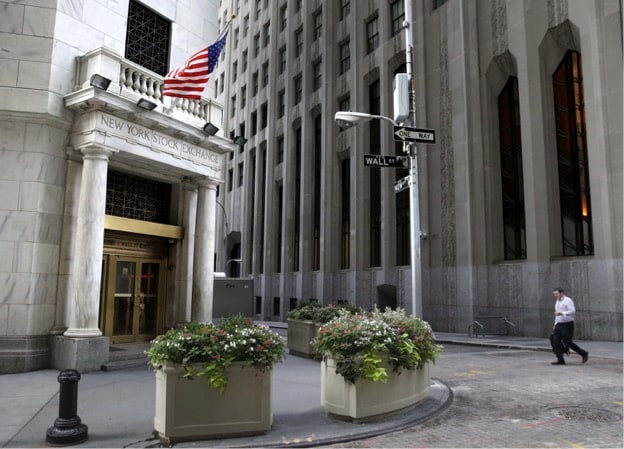Kathryn Judge is a professor of law at Columbia Law School and an editor of the Journal of Financial Regulation.
Ten years ago, the United States was mired in a financial crisis that caused housing prices to plummet by almost a third, major stock indices to fall by half, unemployment to spike to 10 percent and 9 million Americans to lose their homes. While banks are safer today than they were in 2007, the financial system remains vulnerable.
The challenge is that we can never know what exactly will trigger the next global recession. For example, while Congress and regulators have addressed many of the causes of the last crisis, those reforms are already being watered down. If deregulation continues, risk-taking could escalate. Another challenge is that the financial system is constantly changing, making it impossible to panic-proof. The last crisis erupted not in banks but in the “shadow-banking system,” which serves bank-like functions and is exposed to bank-like risks while operating largely outside the direct purview of bank regulators. There are also new risks in modern finance, such as the possibility of large-scale cyber attacks against numerous financial institutions or critical infrastructure.
How, then, can governments set up a crisis-management system when they don’t know when or where the next crisis will strike or what the underlying cause will be?
One way is to give the Treasury secretary an emergency guarantee authority. When the government provides a guarantee, it promises to protect an investor from losing money on a particular investment. Guarantees have a long history of being used to prevent individuals and other investors from withdrawing funds en masse and damaging the financial system in the process. The emergency guarantee authority would allow the Treasury secretary to guarantee virtually any financial claim, giving him the flexibility needed to contain a panic wherever it erupts. The aim is to stabilize financial markets during a crisis while giving regulators the time to figure out root causes.
The incredible breadth of the proposed emergency guarantee authority would need two counterbalances. The first is a strict time limit. Knowing that the mechanisms used to stabilize the system are finite would keep policymakers and bankers focused on identifying underlying causes and developing a plan to address them. A time limit of no more than two years would separate short-term crisis management from the process of resolving deeper problems.
The second needed counterbalance is meaningful procedural checks to limit the use of temporary guarantees to times when the Treasury secretary, in consultation with the president, believes there is a grave and imminent threat to the system and there is no other way to contain the looming panic. There should also be robust reporting requirements, providing the public and Congress with critical information about who is receiving help, the causes of the crisis and proposals for substantive reform.
In 2008, when the failure of Lehman Brothers triggered a mass exodus from money market mutual funds, the Treasury secretary created a similar guarantee program, offering to guarantee money market mutual funds, initially for three months and for a fee. This program stopped the run on money market mutual funds, helped stabilize short-term funding markets, earned the Treasury Department $1.2 billion and did not result in a single bailout. But because the Treasury justified its move by using a special fund that was created in 1934 for a wholly different purpose, this was a legal stretch and lacked in appropriate procedural checks. Congress subsequently forbade the Treasury from ever using the special fund in this way again. An emergency guarantee authority would resolve these issues while giving the Treasury an effective mechanism to stop financial panics.
The primary drawback to government guarantees, however, is that they can reduce market discipline, encourage risky behavior and unfairly protect the bankers whose risk-taking may have caused the crisis. This is always a challenge when the government tries to stop a panic because of the harm it will inflict outside the financial system. The proposed emergency guarantee authority is not immune from these challenges. This helps to explain why this type of authority does not already exist and is not already under discussion.
In the immediate wake of the crisis, Congress and regulators prioritized reforms that promoted the health of financial institutions and crisis prevention. These types of reforms are critical to minimizing the moral hazard that arises whenever the government intervenes in financial markets. More recently, the focus has been on ensuring that banks are not subject to too much regulation. Admitting the need for crisis management and that difficult decisions may again be required is not a popular position. But voters must press Congress for a tool that can help manage future crises, such as emergency guarantee authority.
After all, emergency guarantee authority has the potential to enable more market discipline, at least some of the time. During periods of systemic distress, regulators often do not know how the market will react to the failure of a bank or other bad news. This can make them too hesitant to allow market forces to run their course. This helps to explain, for example, why the Federal Reserve helped save Bear Stearns from bankruptcy in 2008. Had regulators possessed an emergency guarantee authority to stabilize the system if the markets responded badly, the Federal Reserve may have been more inclined to allow Bear Stearns to fail.
The threats to financial stability are too great and too varied not to have a robust crisis-management system in place. When the financial system breaks down, the economy suffers, the deficit balloons, and people throughout the country lose jobs, wealth and sometimes homes. The time to plan for a future crisis is now, not when it next hits.
This was produced by The WorldPost, a partnership of the Berggruen Institute and The Washington Post.




